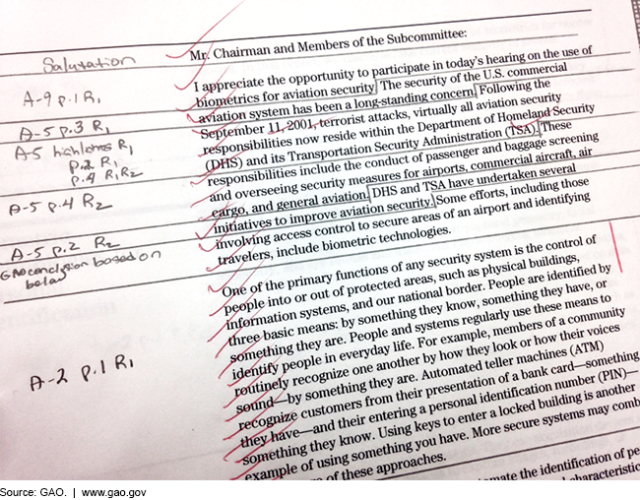The Rigorous Process for Producing “Fact-Based” Information
 It must then be “referenced.” An analyst who did not work on putting the report together checks each link and evaluates the evidence. The “referencer” must give each sentence a thumbs-up or a thumbs-down. Is there sufficient, credible evidence to back what’s written? Assessing that is a big part of the job. There are elaborate rules for evidence, too. (GAO spells out the rules for auditing in Government Auditing Standards, also known as the Yellow Book.)
There are additional layers of detailed review as well. Every year, GAO does in-house quality control reviews. Every 3 years, a crew of international auditors rolls in to check GAO’s work. They pull the records to review how well the indexers and referencers have done their jobs, among other things.
Is this a taxing but rewarding process? That’s a fact.
For additional WatchBlog posts about GAO, click here.
It must then be “referenced.” An analyst who did not work on putting the report together checks each link and evaluates the evidence. The “referencer” must give each sentence a thumbs-up or a thumbs-down. Is there sufficient, credible evidence to back what’s written? Assessing that is a big part of the job. There are elaborate rules for evidence, too. (GAO spells out the rules for auditing in Government Auditing Standards, also known as the Yellow Book.)
There are additional layers of detailed review as well. Every year, GAO does in-house quality control reviews. Every 3 years, a crew of international auditors rolls in to check GAO’s work. They pull the records to review how well the indexers and referencers have done their jobs, among other things.
Is this a taxing but rewarding process? That’s a fact.
For additional WatchBlog posts about GAO, click here.
- Questions on the content of this post? Contact Chuck Young at youngc1@gao.gov.
- Comments on GAO’s WatchBlog? Contact blog@gao.gov.

GAO's mission is to provide Congress with fact-based, nonpartisan information that can help improve federal government performance and ensure accountability for the benefit of the American people. GAO launched its WatchBlog in January, 2014, as part of its continuing effort to reach its audiences—Congress and the American people—where they are currently looking for information.
The blog format allows GAO to provide a little more context about its work than it can offer on its other social media platforms. Posts will tie GAO work to current events and the news; show how GAO’s work is affecting agencies or legislation; highlight reports, testimonies, and issue areas where GAO does work; and provide information about GAO itself, among other things.
Please send any feedback on GAO's WatchBlog to blog@gao.gov.
